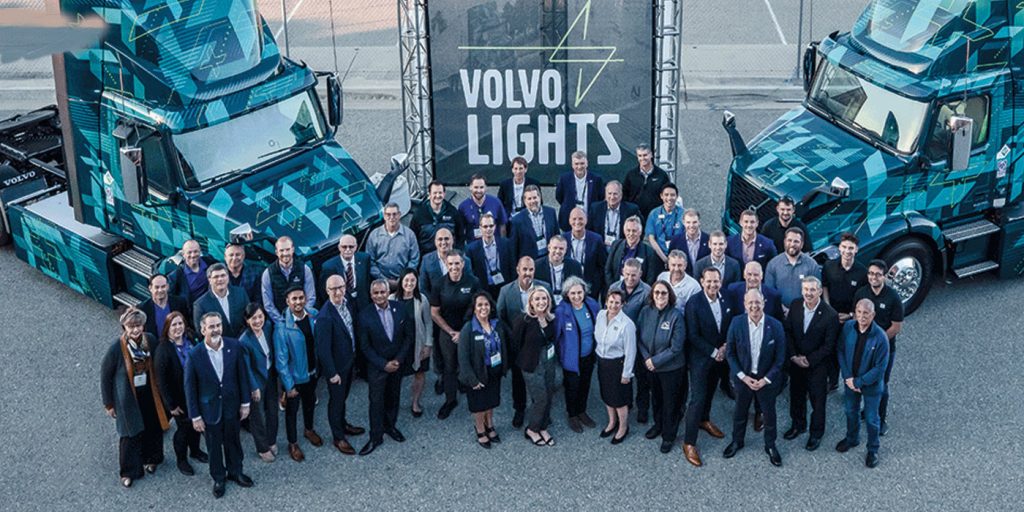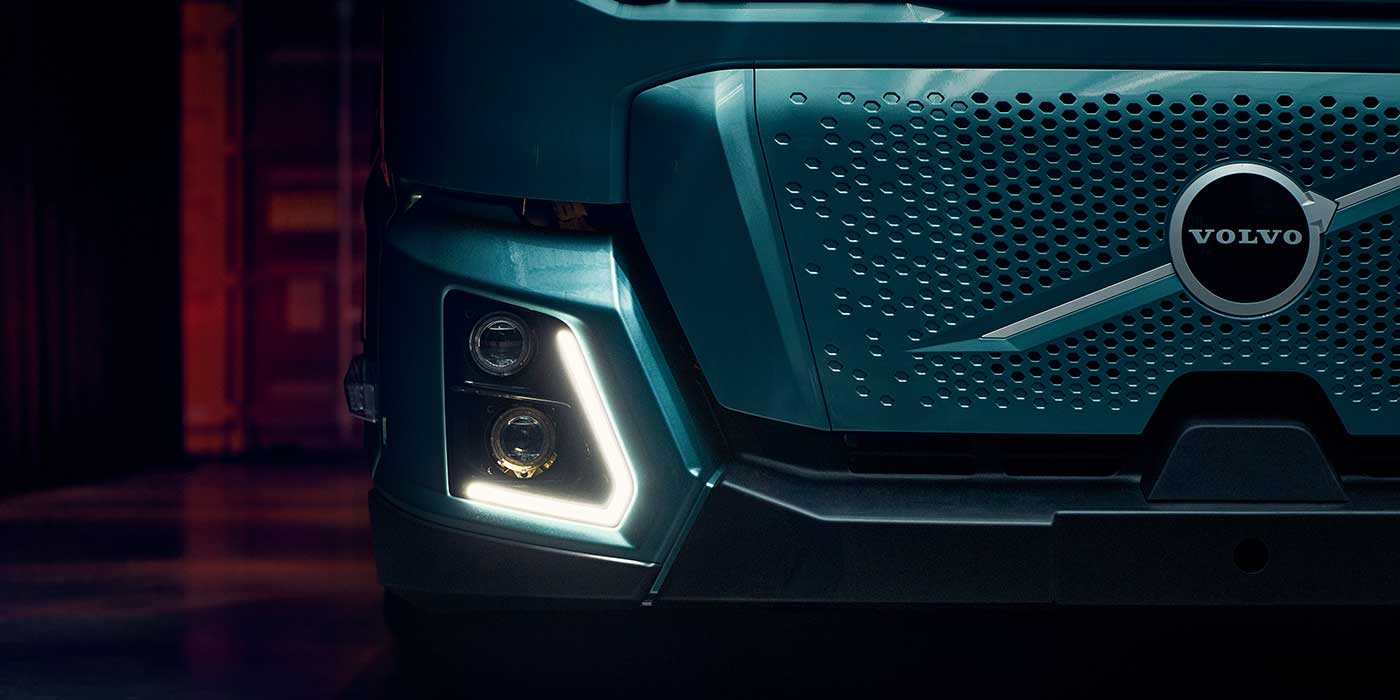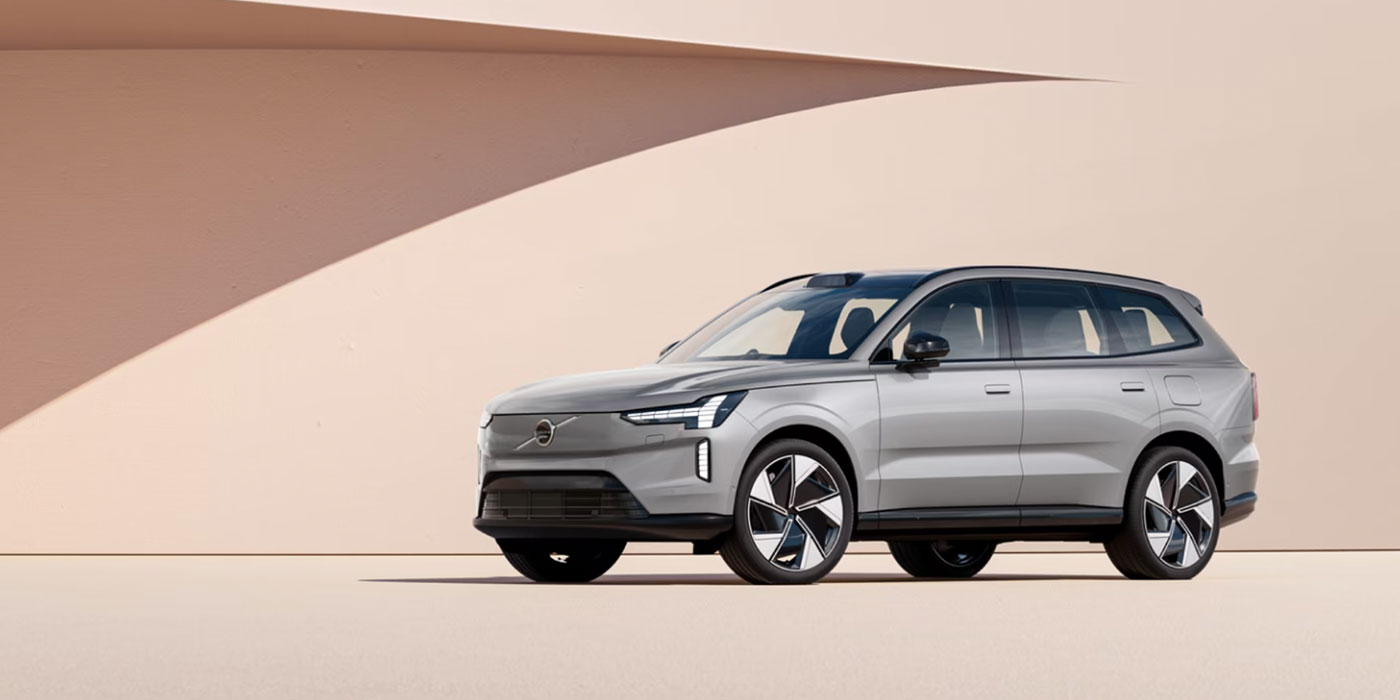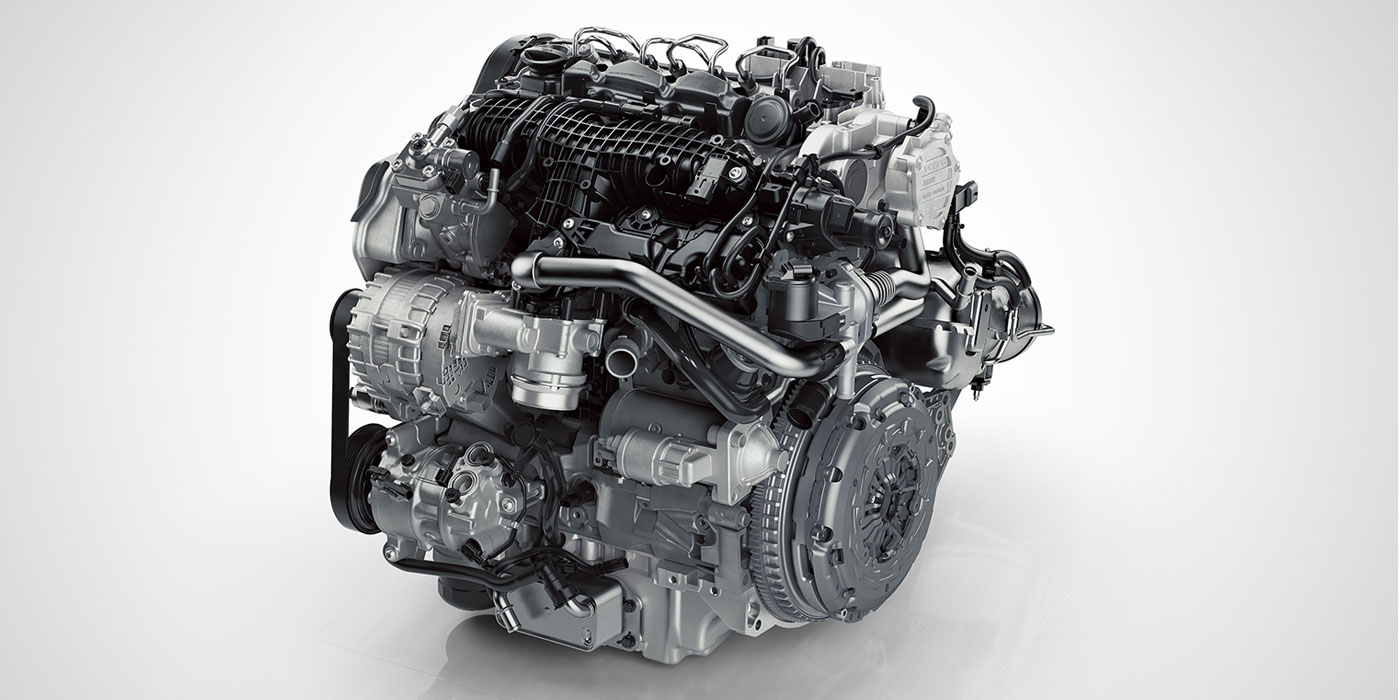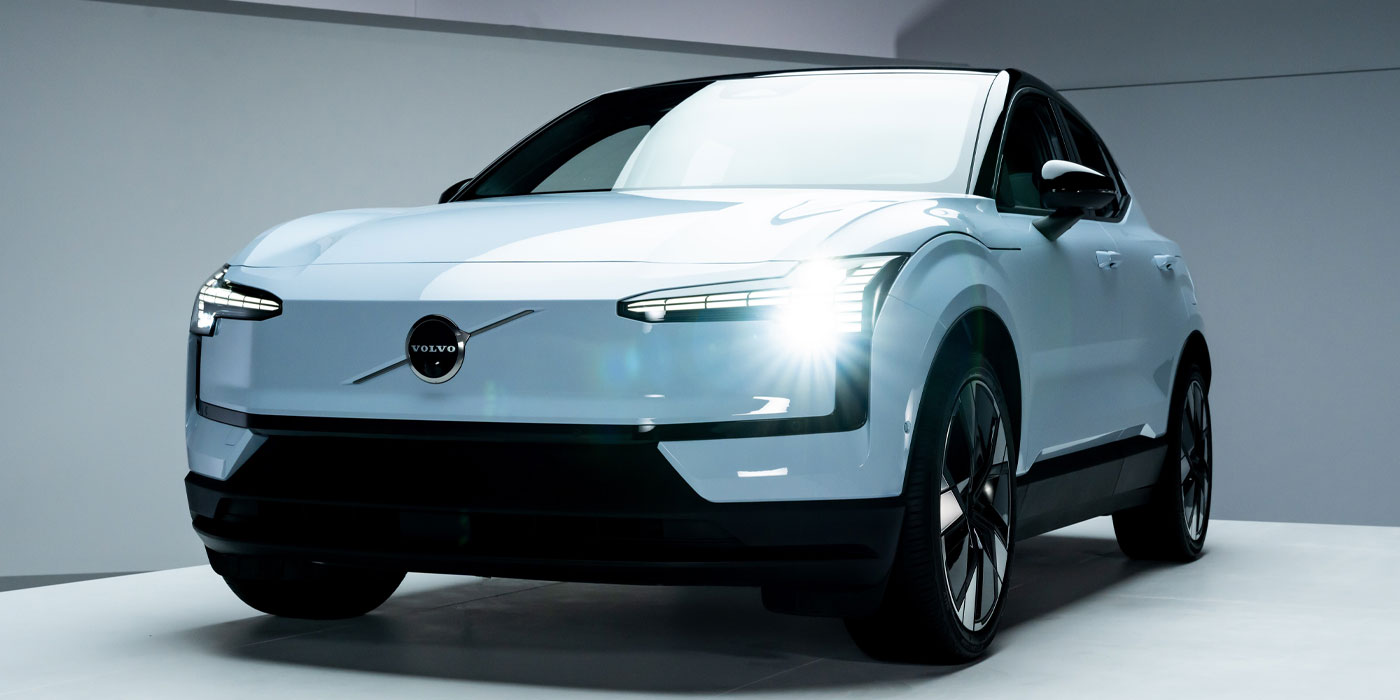Peter Voorhoeve isn’t one to dive headlong into electric truck hyperbole or theoretical equipment applications. As the president of Volvo Trucks North America, he prefers developing relationships with customers, closing business with a solid handshake and delivering on expectations. So at the end of the Volvo Trucks North America’s LIGHTS Project Innovation Showcase event in February, when he closed by saying that the commercial launch of the VNR Electric later this year “will be a fully mature, green transportation solution,” he meant it.
“I personally believe that electromobility is the way forward,” he said to the crowd of 250 fleets, Volvo LIGHTS Project collaborators, journalists and California figureheads when kicking off the event. “Why do I believe that? There is a society and environment push for sustainability. It’s not a PowerPoint bullet point. Our customers and our customers’ customers are pushing for green solutions.”
“Customers are asking, ‘What should I do?’ And more importantly ‘When should I do it?’ From the Volvo Trucks perspective, we’re going to invest, we’re going to see how this works. And then we’re going to have discussions with customers.”
Peter Voorhoeve
He isn’t alone in that belief. The LIGHTS Project consists of 15 partners that aim to make electric trucks a reality by working together to bring solutions, not just equipment, to the market.
“I’m so pleased to celebrate the visionary Volvo LIGHTS Project and what it means to California and to all of us who work, every day, to clean up the air and protect our public health and our environment,” said Barbara Riordan, board member of the California Air Resources Board.
This sentiment was echoed by Dave Thompson, president of TEC Equipment. “We’ve invested about $800,000, and we’ll be supporting 15 electric Volvo VNRs, we’ll be running a couple of our own for parts deliveries, and we’re excited to see how this all works. We’re optimistic that we’re on a great path forward to save money and contribute to the clean air initiative,” he said.
Pulling together an event that combines nearly every facet of running an electric truck doesn’t happen overnight. Volvo has been working for two years to make it a reality, and just three months ago, Peter sat in his office in Volvo Trucks North America’s Greensboro headquarters amid a constant buzz of productivity. At a time in the year when many companies were winding down for the holidays, Volvo Trucks North America was ramping up to pull together the event that would put its LIGHTS Project in the limelight.
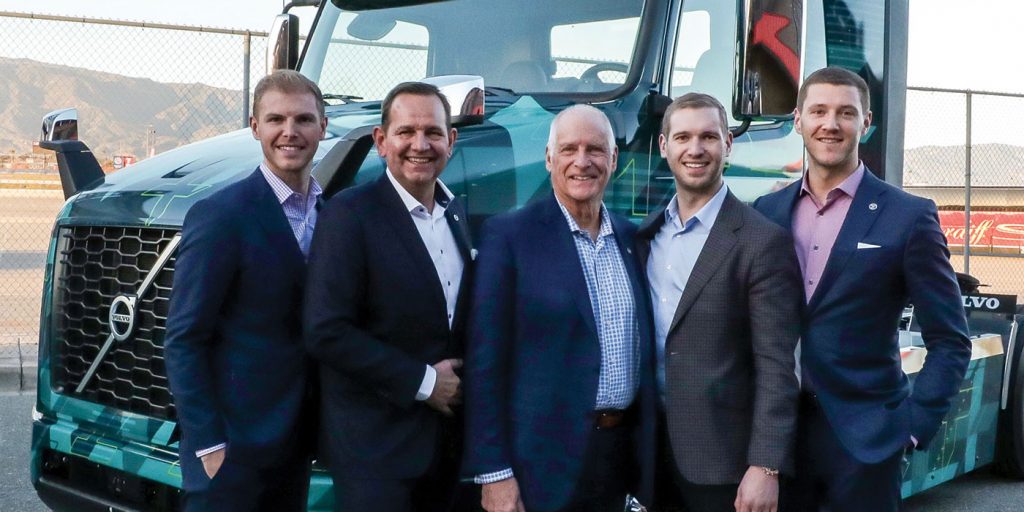
While Peter believes in electromobility, he knows that belief isn’t enough. Tough questions need answers.
“The Volvo LIGHTS Project asks us to commercialize the solution by the end of the year—that’s its deliverable,” he said. “There are customers in the market that take the sustainability objectives and the sustainability agenda very seriously, and some of these customers, often the larger ones, put in teams together in order to study electric trucks and ask: ‘Okay, how does this work? How quickly can adoption go?’
“I think a lot of customers want to go really, really fast—faster than what is really possible—because I don’t believe that everybody completely understands how it will work and what the associated costs are in this early stage.”
“There is a society and environment push for sustainability. It’s not a PowerPoint bullet point. Our customers and our customers’ customers are pushing for green solutions.”
Peter Voorhoeve
Talk of application and electric truck capabilities are front and center—and that answer is unique to every fleet.
“There’s value for us in spending time to find out how we fit electric trucks into the customer’s operations rather than making the customer change entirely to take on electrification,” said Keith Brandis, vice president of partnerships and strategic solutions with the Volvo Group . “The customers that we’ve engaged, NFI and Dependable Supply Chain Services for example, are also electrifying their facility. So as a prime project contractor, we’re working with them to electrify forklifts, electrify the yard jockeys in addition to trucks. We have another customer installing solar panels. These are companies taking a complete footprint approach.”
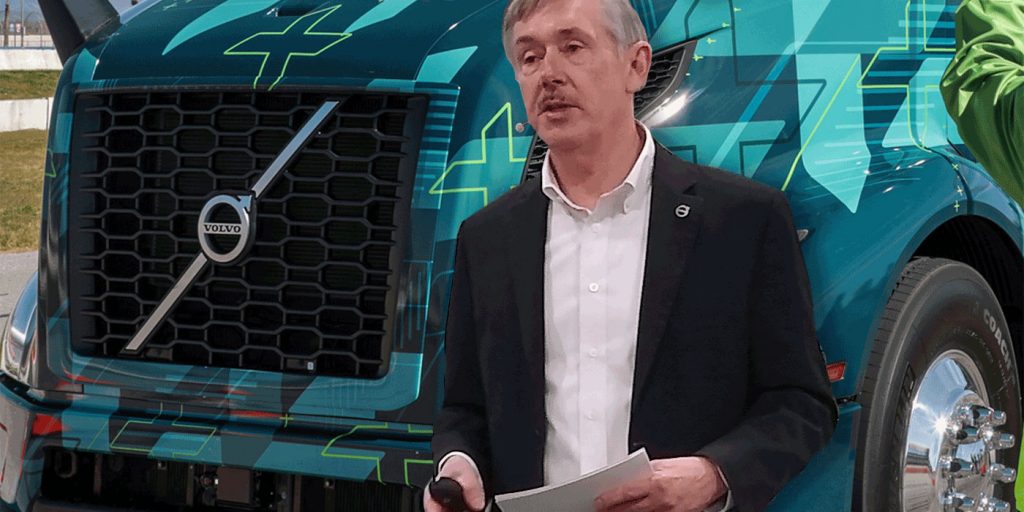
“This is where our consultative approach rings true,” Peter adds. “Customers are asking, ‘What should I do?’ And more importantly, ‘When should I do it?’ From the Volvo Trucks perspective: we’re going to invest, we’re going to see how this works. And then we’re going to have discussions with customers. But the one thing that we’re really proud of within the LIGHTS Project is that it’s an end-to-end approach.”
Volvo’s VNR Electrics were quietly speeding around a closed course at the Fontana Speedway near the TEC Equipment facility, where 15 of the electric trucks will be serviced and supported as they roll out into leased applications with select customers. No technical specs were discussed at the LIGHTS Project Innovation Showcase, but Peter did report that the trucks would be in customers’ real-world operations that sported routes of 75 miles to 175 miles with gross vehicle weights of up to 66,000 lbs. As exciting as the trucks were to drive—electric motors with impressive propulsion and regenerative braking systems that captured energy and delivered it back to the batteries—the discussion around the charging infrastructure on display in the TEC Equipment garage was equally energizing.
Two ABB 50kW DC fast chargers sporting Greenlots SKY cloud-based charging software were flanked by everyone that needed to work together to get the chargers installed: TEC Equipment staff, Keith on the Volvo side, ABB, Greenlots and Southern California Edison.
“In these early days of establishing charging infrastructure,” Keith began, “what we’re seeing is that charging just a few trucks means you typically have to step up the transformer and utility companies mainly concerned with that. They look at their incoming line, incoming use, they step up the transformer, and they put a separate metering pattern for just a few trucks.
“But then about electrifying your fleet—instead of having just several hundred kilowatts for one truck, you’re consuming that times a hundred trucks. Now you’re in the mega megawatts. That’s going to change the grid and the infrastructure available just to have that type of power on site.”
Charger selection and charging strategies driven by software are as varied, complex and specialized as the trucks are to their applications. The two 50kW DC fast chargers will be joined by the installation of an additional 150kW DC fast charger this month at TEC Equipment. Penske, which has been a leading fleet in the electric truck trial programs, installed 14 charging stations last year, most of them 150kW stations, and planned to bring that total up to 20 as it grows its electric truck utilization.
Making those decisions requires that fleets talk with their OEM, utility provider, charger manufacturer and software provider. And there’s no standardization in these Wild West electric truck development days. Each OEM has its own charging cable that connects the truck to the charger and charging software that allows it to charge. If you don’t have the right software on your charger, you could plug the truck in and it would not charge.
Once you have charging infrastructure installed and connected, the software will drive your charging strategy.
“There are three critical areas that Greenlots is going to help deliver solutions,” said Idine Ghoreishian, senior manager of auto OEM integration with Greenlots, a member of the Shell Group and provider of electric vehicle charging and energy management solutions. “Those would be smart charging, grid splits, stability and load management. What that means is that as a fleet operator’s facility is about to reach its peak energy usage, our software will automatically be able to adjust the rate and speed of the vehicle charging to avoid hefty peak demand charges. We can also further mitigate the cost by tapping into the facilities onsite solar and battery storage if available.
“The smart charging and the optimization solutions,” he continued, “can dynamically respond to building load requirements and this helps ensure that the EV load does not exceed the capacity while still making it easy for the vehicles to charge when they need to. All of this is critical as we work together with all of our partners to ensure a financially viable solution and a competitive total cost of ownership.”
“The point is,” Keith said to stress the most important takeaway, “start the conversation early, ask the questions early and bring all of the experts you need together early.”
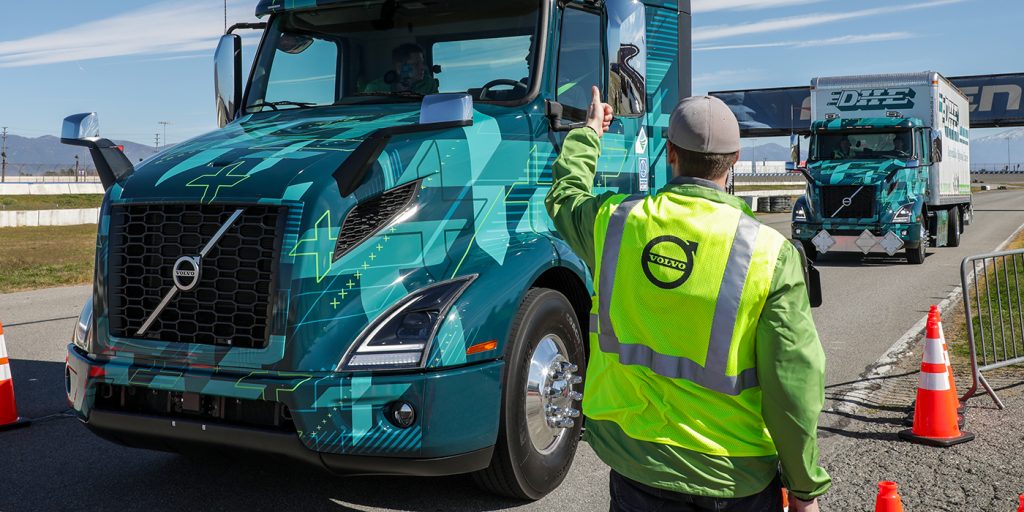
The next step
“Electromobility is not a disruptor—it’s an evolution,” Peter said. “It’s a different powertrain, but it’s still the same truck—it’s still 80,000 lbs. and there’s still a driver. Bringing electromobility to the market is a dedicated task and needs dedicated people and dedicated time, from me as well.”
That’s why Peter has monthly Volvo Trucks North America 1.0 business meetings and 2.0 business meetings, the latter being when the next generation of truck equipment, technology and solutions are discussed by his dedicated teams headed up by people like Keith; Brett Pope, director of electromobility; and Mark Curri, senior vice president of uptime and customer support.
As the team looks on to see how the electric VNR trucks perform in their operations, the same data that drives your current diesel efficiency and productivity goals will inform and impact the commercial rollout of Volvo’s electric truck lineup into applications starting with local distribution, and then into regional distribution, construction, regional haul and long haul as the electric truck technology matures.
“Connectivity is a vital part of our entire strategy,” Peter said.
“The cost of the electricity, the state of charge on the batteries, the lifecycle of the batteries, then you have a trade off on the life cycle—we’re going to use data to drive those decisions,” Keith said. “We’re taking those types of data points, along with any kind of vehicle faults that we have, and putting them into reports to share with our customers.”
“And that’s no different than our daily operation,” Peter said. “This is why we have the Uptime Center—a 24-hour, full-time staff that watches our analytics and supports our customers. Analyzing that data lets us have the conversation with the customer in which we can say, ‘If you change this spec and use this technology, maybe it’s a different rear axle ratio or program sequencing in your I-Shift, you will see better results.’ It’ll be the same approach for electric trucks.”
“Think about a drayage operation,” Keith said. “You don’t have a trailer on your way to the port, but then you pick up a fully loaded container. Now you’ve got to go up the mountain to the other side to get to the Inland Empire to the distribution centers. We’re looking at how we use regenerative braking the best we can, but then also have enough power and torque so that we’re able to maintain highway speeds and optimize towards a range of requirements of our customer. We’ve mapped those routes very carefully and we know how much power we can put and where, almost on a mile-by-mile basis.”
All of that information is shared and discussed openly with customers.
Back on stage at the Volvo LIGHTS Project event in front of all of the partners that will work together to make electric trucks a reality, Peter speaks plainly about the challenges to come.
“We have a group of people working together to analyze the data of 150,000 vehicles, obviously diesel right now, but electric trucks will be connected as well, and we’ll use that data to optimize our decisions,” Peter said, setting up his closing remark. “Final slide, and this says it all: The electric VNR and the Volvo LIGHTS Project is more than a truck. It is a real solution for a better and greener transport environment.”
Driving the trucks, talking with charging infrastructure experts, seeing it all come together proved the point: This wasn’t pie-in-the-sky electric truck hyperbole. It was reality, with transparency and collaboration that are core tenants of not just the LIGHTS Project, but also of Volvo Trucks North America’s strategy in navigating change and delivering solutions together.

